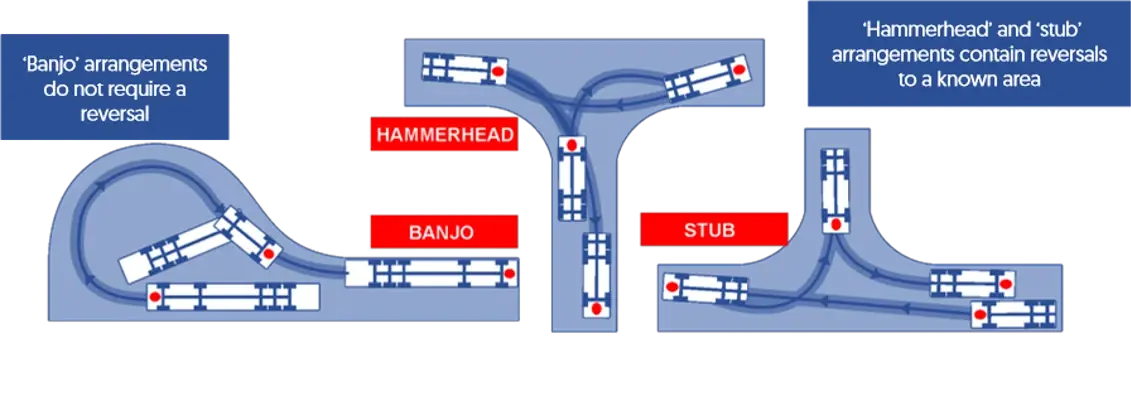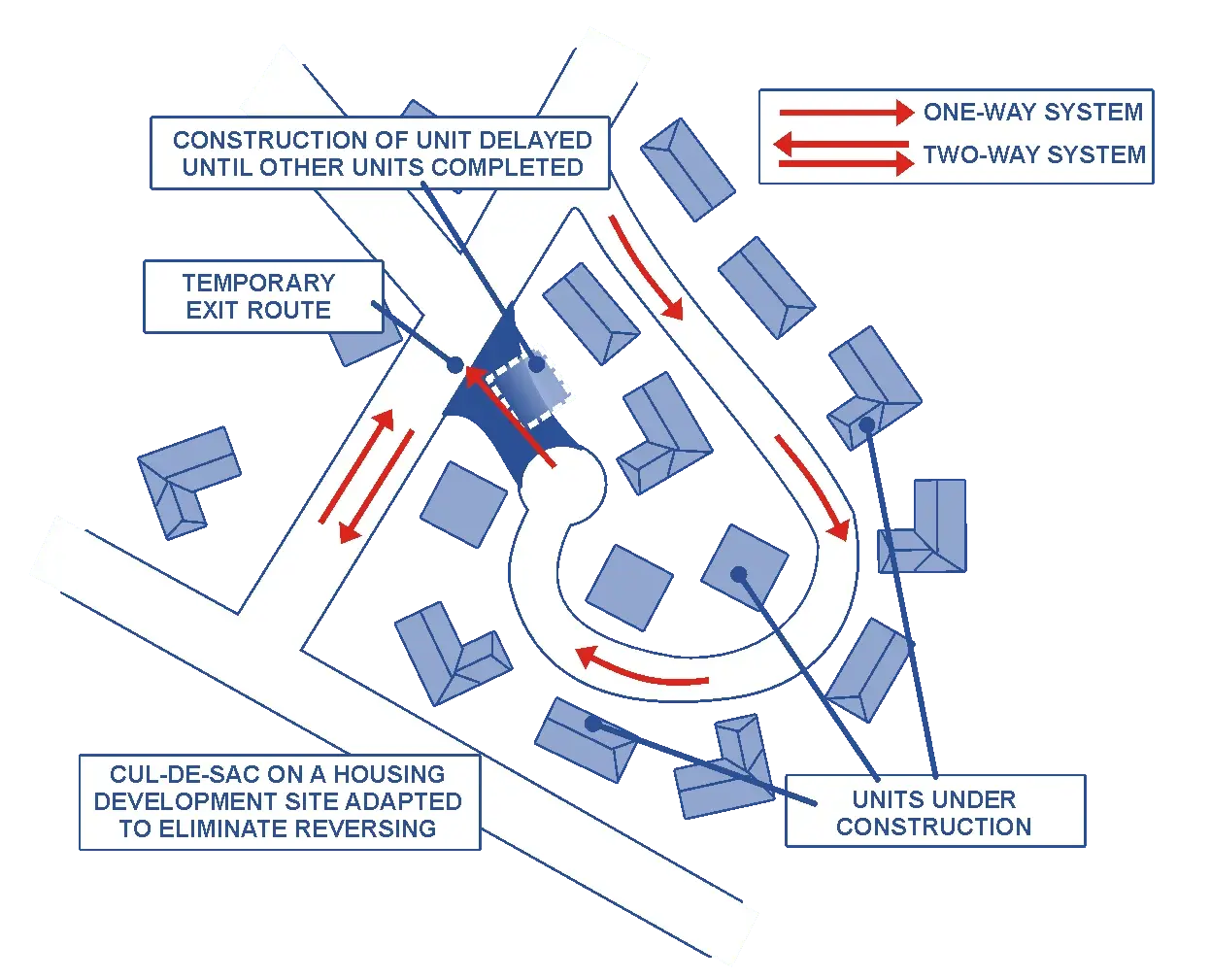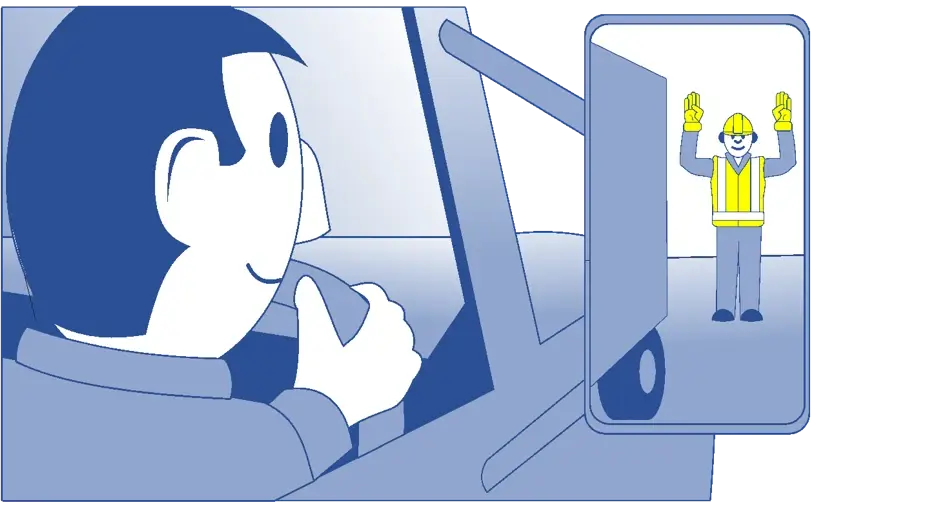Banksmen play an important role in ensuring that certain operations take place safely on site, including crane lifts, traffic management, traffic flow, and vehicle direction.
In this article, we will look at the roles and responsibilities of the banksman, the part they play in ensuring the health and safety of those on site, and the different hand signals and verbal communications they use.
What is a banksman?
What does a banksman do?
What is a slinger banksman job description?
What does a slinger banksman do?
What does a banksman look like?
What are the standard banksman hand signals?
What verbal code will a banksman use?
What are the risks associated with lifting operations?
What does a banksman do during lifting operations?
What are the risks associated with moving vehicles?
What does a banksman do during vehicle operations?
Can a banksman stop traffic?
Banksmen as traffic marshals.
What is a banksman?
Banksmen are operatives responsible for safely directing vehicle movement on or around a site. It is their job to ensure that any manoeuvres involving vehicles are carried out safely and do not endanger anybody or anything.
Banksmen, often referred to as traffic marshals or signallers, can be found in a range of different workplaces, including construction sites, docks, factories and warehouses.
What does a banksman do?
There are several things that a banksman must do to minimise the risks that a vehicle poses to personnel and equipment. These include:
- Managing traffic flow to avoid excess queueing.
- Directing movement of vehicles and loads on a work site using standard hand signals and/or verbal code.
- Understanding the risks on a site (such as blind spots) and how to manage them.
- Recommending and laying out safe on-site traffic systems to ensure the safe movement of vehicles.
What is a slinger banksman job description?
Under certain circumstances banksmen are required to aid lift operators, such as cranes. When banksmen assist a lift they are often referred to as signallers or slingers. Loads moved by cranes are often called sling loads hence the term slinger for the person helping the crane operator.
What does a slinger banksman do?
When acting as a slinger or signaller, they direct the lift operator using standard signals and/or verbal code.
It is important that the slinger or signaller has been trained to use the standard hand signals or agreed verbal code. So that the crane operator is in no doubt about how to safely operate the lift.
All lifts can be hazardous when health and safety standards are not upheld. However a slinger banksman is usually only required for larger operations, such as crane lifts.
Simple lifts such as unloading a Hiab or using a forklift do not usually require a slinger banksman.
What does a banksman look like?
It is important that banksmen can be easily identified in the workplace and, as a result, they must wear high-visibility clothing that is of a colour only used by banksmen. This could be a high-visibility jacket, helmet, sleeve or armband.
Some sites will also make use of the Safety Helmet Colours code, developed by Build UK, which specifies the colour of helmet that everyone on site should wear to ensure that they can be easily identified:
- White: Site Manager, Competent Operative, or Vehicle Marshal (the latter of which must also wear a different coloured high-visibility vest).
- Black: Supervisor.
- Orange: Slinger or signaller.
- Blue: Anybody else on-site.
It is important to note that this standard is not a legal requirement, so anyone entering a site for the first time should take the time to find out what the banksman is wearing, and how they can distinguish between the different workers on site, to ensure their own safety.
What are the standard banksman hand signals?
There are a set of twelve standard hand signals that a banksman will use. They are designed to be precise, simple, expansive, and easy to make and understand.
These twelve signals can be split into three categories:
General signals
Start signal | Both arms are extended horizontally with the palms facing forwards. | ![Banksman Start Hand Signal]()
|
Stop signal / interruption / end of movement | The right arm points upwards with the palm facing forwards. | ![Banksman Stop Hand Signal]()
|
End of the operation | Both hands clasped at chest height. | ![Banksman Hand SIgnals End of Operation]()
|
Danger / emergency stop | Both arms pointing upwards with the palms facing forwards. | ![Banksman Hand SIgnals Danger / Emergency Stop]()
|
Vertical movements
Raise | The right arm points upwards, with the palm facing forward, and slowly makes a circle. | ![Banksman Hand Signal Raise]()
|
Lower | The right arm points downwards, with the palm facing inwards, and slowly makes a circle. | ![Banksman Hand Signals Lower]()
|
Vertical distance | The hands indicate the relevant distance. | ![Banksman Hand Signal Vertical Distance]()
|
Horizontal movements
Move forwards | Both arms are bent with the palms facing upwards. The forearms make slow movements towards the body. | ![Banksman Hand Signals Move Forward]()
|
Move backwards | Both arms are bent with the palms facing downwards. The forearms make slow movements away from the body. | ![Banksman Hand Signals Move Backwards]()
|
Move to the banksman’s right | The right arm is extended horizontally with the palm facing downwards and slowly makes movements to the right. | ![Banksman Hand Signals Move To Banksmans Right]()
|
Move to the banksman’s left | The left arm is extended horizontally with the palm facing downwards and slowly makes movements to the left. | ![Banksman Hand Signals Move To Banksmans Left]()
|
Horizontal distance | The hands indicate the relevant distance. | ![Banksman Hand Signals Horizontal Distance]()
|
It is important to be aware that, when a banksman performs a gesture more quickly or slowly, it indicates that the action should be performed likewise.
What verbal code will a banksman use?
Alongside hand signals, a banksman may use verbal communication to direct a manoeuvre. If they do so, they will use a set of code words that include:
Start | To indicate the start of a command |
Stop | To interrupt or end a movement |
End | To stop the operation |
Raise | To have a load raised |
Lower | To have a load lowered |
Forwards / backwards / left / right | To be coordinated with the corresponding hand signals |
Danger | For an emergency stop |
Quickly | To speed up a movement for safety reasons |
What are the risks associated with lifting operations?
When not carried out correctly, all lifting operations can be dangerous. For example:
- The crane may have moving parts, such as rollers, belts, chains and pulley drives, which can trap or pull in body parts.
- Parts of the equipment may fail, such as the slings holding the load in place, or the cables suspending the load. This can lead to loads being dropped, causing serious injury or death and/or damage to equipment and materials.
- During operation the load or crane can crush people against walls or objects, or cause damage when moving past or into other objects.
As a result of this, a banksman may be needed to supervise and direct larger lifting operations, such as crane lifts.
What does a banksman do during lifting operations?
The Lifting Operations and Lifting Equipment Regulations 1998 (LOLER) state that:
“If the operator of lifting equipment cannot observe the full path of the load, either directly or by means of auxiliary devices, the employer should ensure that a responsible person has appropriate means of communication to guide the operator.
Measures should be taken to prevent the load striking anything or any person.”
According to LOLER, a banksman is needed when the lift operator cannot see the load during any part of the lift. They will be responsible for directing the operator using hand signals and/or verbal code to ensure that the load does not travel over anybody and does not come into contact with anything or anyone.
While not explicitly mentioned by LOLER, banksmen should also be used for any lifting operation in which assistance is required to ensure that it is carried out safely, not just those where the load cannot be fully observed.
What are the risks associated with moving vehicles?
Operations that involve the use of moving vehicles, such as loading and unloading operations, can be dangerous and pose several risks, including:
- Potential for people (often the driver) to fall off the load or vehicle if they climb onto it.
- Potential for vehicles to overturn on uneven ground.
- Danger from passing vehicles if a site’s segregation of pedestrians and vehicles is poor.
- Potential for loads which may have moved in transit falling off.
These risks are increased dramatically during vehicle reversing manoeuvres, with almost a quarter of all vehicle-related deaths caused by a reversing vehicle.
What does a banksman do during vehicle operations?
In order to avoid the risks and accidents associated with moving vehicles, banksmen are often deployed to safely control vehicle movement by designing and laying out the roadways for vehicles to travel on through a site. They may also personally direct vehicles when traffic is heavy in order to avoid excess queuing.
Usually, banksmen will implement a one-way traffic system that allows vehicles to safely flow through a site and minimises the need for pedestrian crossings to maintain safe segregation.
What are turning areas?
Turning areas are used to allow vehicles to safely turn around while driving forwards for as much time as possible. Ideally, a ‘banjo’ arrangement will be used, although ‘hammerhead’ and ‘stub’ arrangements may also be required.
- ‘Banjo’ arrangements do not require a reversal.
- ‘Hammerhead’ and ‘stub’ arrangements contain reversals to a known area.
![turning areas for banksman guide turning areas for banksman guide]()
What is a one-way system?
One-way systems are designed to help eliminate the need for vehicle reversals. They are sometimes referred to as drive-in/drive-out systems.
They usually work clockwise around a site as this is the direction most drivers would expect.
![one way system guide for banksman one way system guide for banksman]()
















